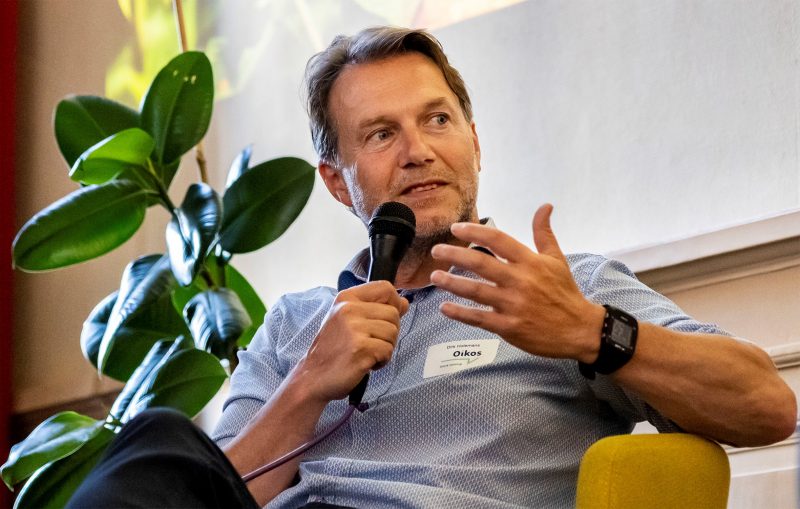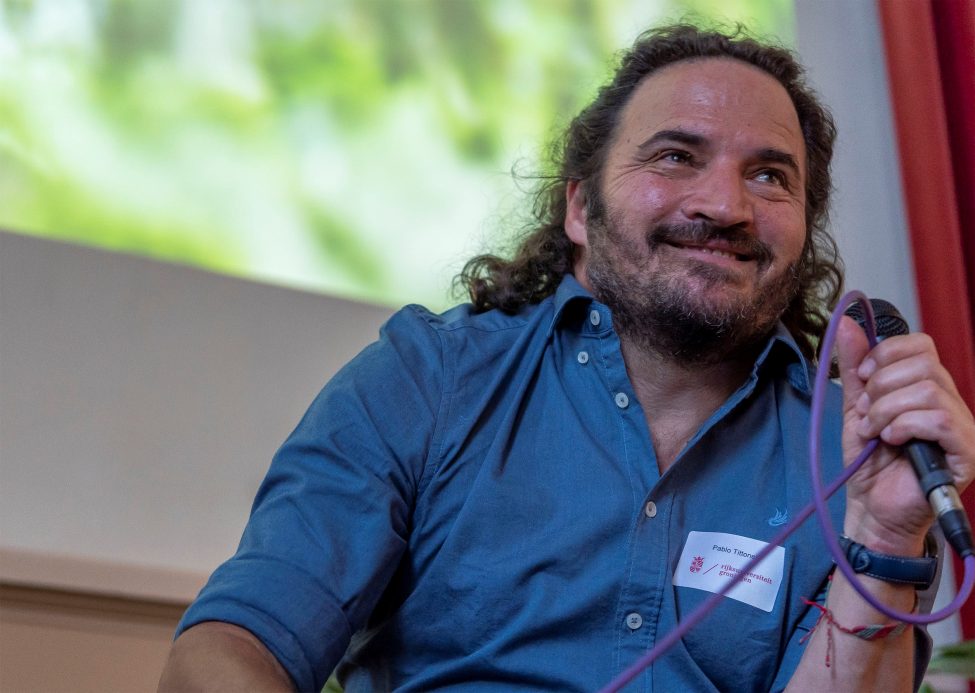More and more often, we are faced with crises that affect us all, no matter where on earth. The best example is climate change, which we have been witnessing for several decades now. But also the increasing spread of zoonoses – infections that spread from animals to humans – has raised many alarm bells in recent years. COVID-19 showed us what it can all lead to when a local zoonosis develops into a global pandemic. There is no longer any doubt that our global food system, among other things, is at the root of this.
Empty shelves and pandemics: does agroecology offer an answer?
Today, we face global challenges and are seeking holistic solutions. How do we ensure access to healthy and diverse food for all? How can we prevent future pandemics? And does agroecology offer an answer? Dirk Holemans, coordinator of Oikos, posed our burning questions to Pablo Tittonell, professor of agroecology and chair of ‘Resilient agricultural landscapes for nature and people’ at the University of Groningen.
Listen to the full interview on our podcast.

Interview with Pablo Tittonell – the podcast
 Holemans: “You often hear the argument that agroecology cannot feed the world. The dominant view is still agro-industry. How do you respond to that?”
Holemans: “You often hear the argument that agroecology cannot feed the world. The dominant view is still agro-industry. How do you respond to that?”
Tittonell: “The World Health Organisation calculates food security based on cereal production level. Cereals account for 80% of the calories we eat, either directly as cereal products or converted into meat and dairy products. However, the countries with the highest yields, including many western European countries, the United States, New Zealand, the United Emirates, etc., altogether account for only 25% of world production. So they are not feeding the world. The poorest countries with the lowest yields altogether account for about 30% of world production, but their populations are growing rapidly. We must produce more where food is needed. Not in Belgium, but especially in countries like these where you are active with Vétérinaires Sans Frontières.”
Holemans: “Do you think agroecology is the best model? I can imagine that large companies will say: use our model, our fertilisers, pesticides, GMOs. Success guaranteed!”
 Tittonell: “Well, that success is not guaranteed. Countries like Argentina produce 10 times more food than the population needs, and yet they are not able to feed themselves. Food production is not the same as food security. Availability and access to affordable and healthy food also play a role. In addition, many farmers struggle with psychological problems. They are in debt for their entire life. No wonder they are not able to get successors. It’s a model in crisis that needs subsidies to stay afloat. We need a different system, and the most promising model is agroecology.”
Tittonell: “Well, that success is not guaranteed. Countries like Argentina produce 10 times more food than the population needs, and yet they are not able to feed themselves. Food production is not the same as food security. Availability and access to affordable and healthy food also play a role. In addition, many farmers struggle with psychological problems. They are in debt for their entire life. No wonder they are not able to get successors. It’s a model in crisis that needs subsidies to stay afloat. We need a different system, and the most promising model is agroecology.”
Holemans: “The latest IPCC reports underline the contribution of livestock farming to greenhouse gas emissions and therefore urge a switch to a more plant-based diet. But many extensive livestock farming systems in the South are often beneficial for the preservation of biodiversity and in the fight against climate change. How can this be reconciled?”
 Tittonell: “Countries with excessive meat consumption, such as many European countries, Argentina and the United States, have an almost moral obligation to reduce it. The World Health Organisation recommends an intake of 90 grams of meat per day. If we reduce our average meat consumption to the recommended level, we can have an enormous impact on cooling the planet. And we can produce that amount of meat on grass, without agro-industrial farming. We are talking about 20% of what we are producing today. This is already a reality in many countries in the South, where livestock also fulfils an important function in the ecosystem. Therefore, if we use livestock in the right way, the amount of carbon that the grasses store in the soil can compensate its emissions of greenhouse gases. When we manage to balance our diet, the livestock numbers and ecosystems, we can be almost carbon neutral.”
Tittonell: “Countries with excessive meat consumption, such as many European countries, Argentina and the United States, have an almost moral obligation to reduce it. The World Health Organisation recommends an intake of 90 grams of meat per day. If we reduce our average meat consumption to the recommended level, we can have an enormous impact on cooling the planet. And we can produce that amount of meat on grass, without agro-industrial farming. We are talking about 20% of what we are producing today. This is already a reality in many countries in the South, where livestock also fulfils an important function in the ecosystem. Therefore, if we use livestock in the right way, the amount of carbon that the grasses store in the soil can compensate its emissions of greenhouse gases. When we manage to balance our diet, the livestock numbers and ecosystems, we can be almost carbon neutral.”
Holemans: “In addition, we are also witnessing a new reality, the COVID-19 crisis and the increasing occurrence of zoonoses. It is clear that clearing forests and destroying ecosystems increases the risk of zoonoses such as COVID-19 and Ebola. What answer does agroecology offer to this?”
 “Our food systems are at a crossroads. The climate and biodiversity crisis and the most recent health crisis are all food-related. If we rethink our food system, we can positively influence all these problems. The dominant food system we have today disturbs the balance within natural ecosystems and disrupts the disease-regulating function that biodiversity provides. Keeping so many animals per square metre in agro-industrial systems also allows diseases to spread very quickly and increases the risk of transmission to humans.
“Our food systems are at a crossroads. The climate and biodiversity crisis and the most recent health crisis are all food-related. If we rethink our food system, we can positively influence all these problems. The dominant food system we have today disturbs the balance within natural ecosystems and disrupts the disease-regulating function that biodiversity provides. Keeping so many animals per square metre in agro-industrial systems also allows diseases to spread very quickly and increases the risk of transmission to humans.
If we had had agro-ecological landscapes in south-east China with a lot of biodiversity and corridors for nature, we might not have had the situation of the past two years. Agroecology needs a biodiverse landscape and does not work in a uniform landscape with monocultures.”
Holemans: “So we must not only reduce our intensive use of fertilisers and feed here, but also boost production in the South in an agroecological way. Isn’t that also the way to make farmers more resilient to climate change?”
Tittonell: “Absolutely. To restore severely degraded soils, we need to bring in a lot of organic material. Of which half of it is carbon, which plants draw from the atmosphere and store it safely in the soil. Restoring degraded soils in an agroecological way is thus a valuable contribution in the fight against global warming.”
This podcast was made in cooperation with De Landgenoten. The conversation between Dirk Holemans and Pablo Tittonell took place on 17 May, live in the Foyer of De Vooruit in Ghent. The introduction was provided by Anthony Denayer of Vétérinaires Sans Frontières.

